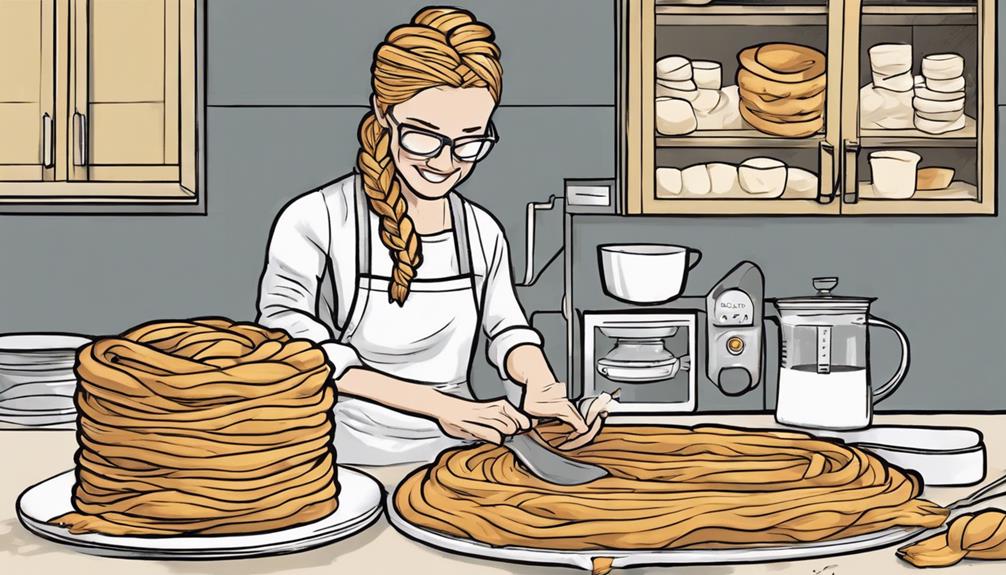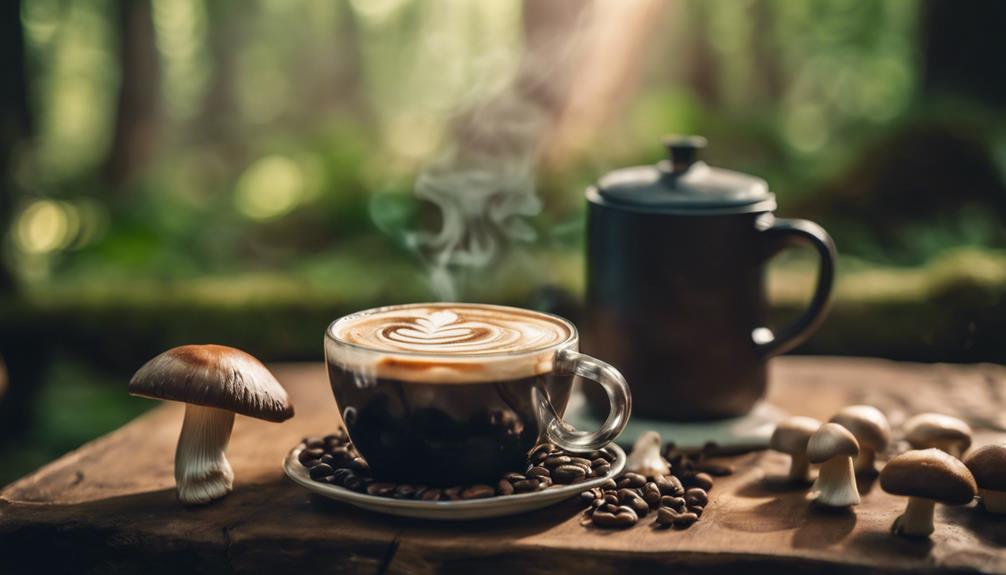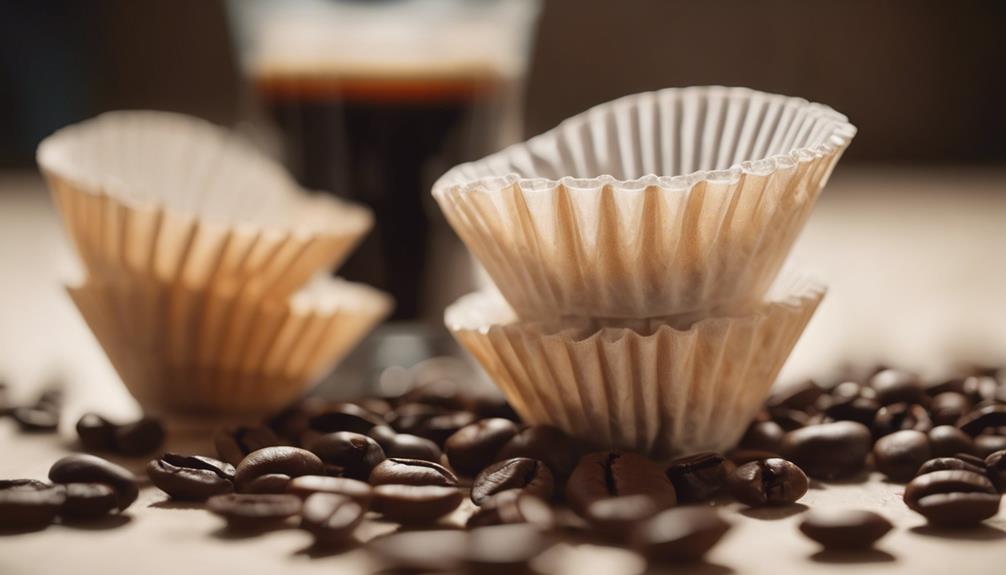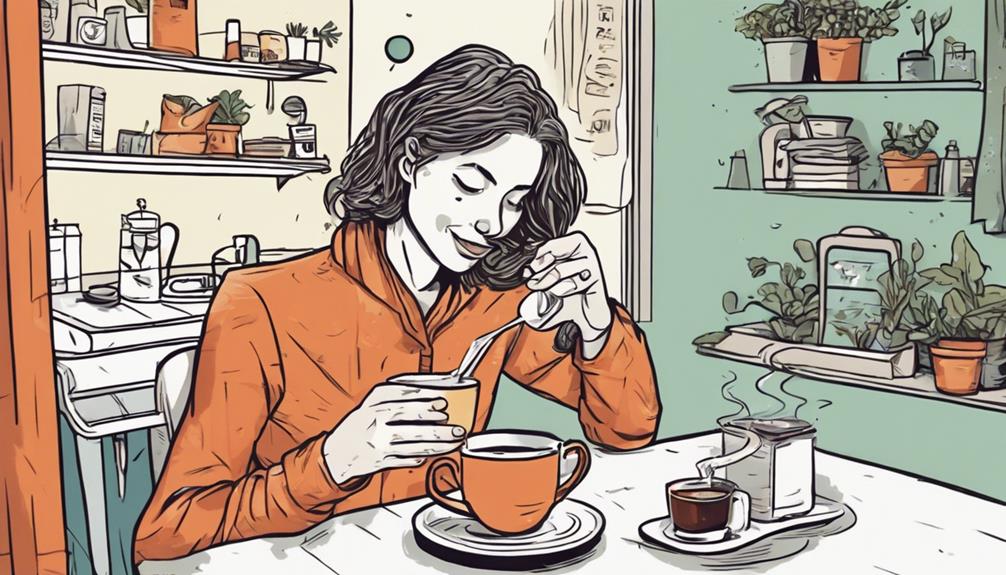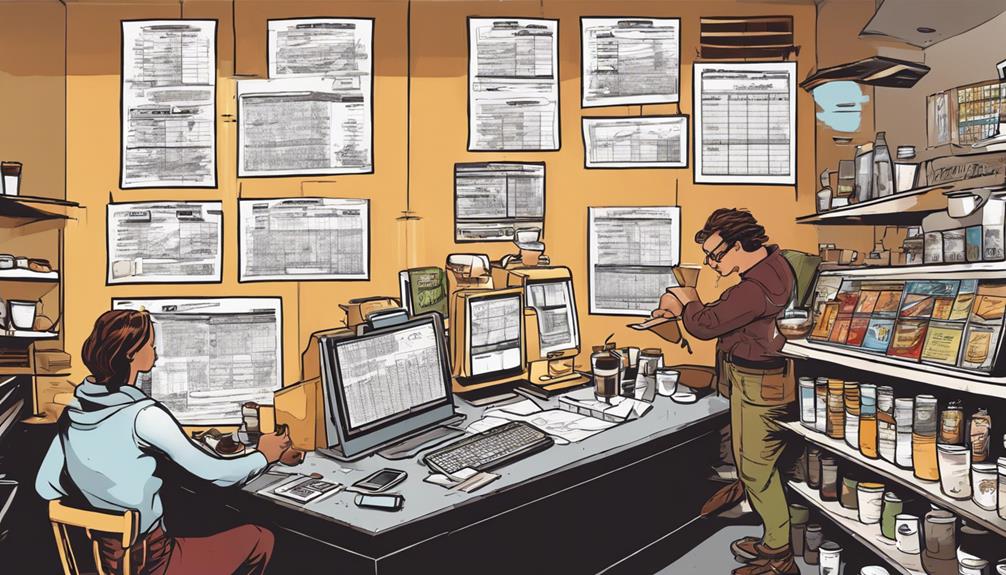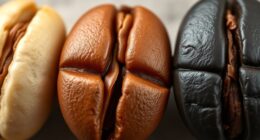To create an elegant coffee cake braid, start by rolling out the dough into rectangles. Spread butter and filling evenly, then skillfully braid it for a fancy appearance. Let it rest for an hour before baking at 350°F. For the icing, combine powdered sugar, milk, and vanilla until smooth, then drizzle over the cooled cake for a touch of sweetness. Customize the icing with various flavors to enhance the experience. Explore expert tips from the community to improve your braiding technique and make beautiful, tasty coffee cakes that will be enjoyed by all.
Key Takeaways
- Roll out dough into rectangles for braiding.
- Spread filling evenly on rolled dough.
- Braid dough skillfully for an elegant appearance.
- Let braided coffee cake stand before baking.
- Drizzle icing generously for a fancy touch.
Recipe Instructions
To start creating the braided coffee cake, dissolve the yeast in warm water before blending it with the butter mixture for the dough. Once the dough is prepared, roll it out into rectangles and evenly spread butter and filling.
Now comes the enjoyable part – braid the dough to create that elegant appearance that will surely impress your guests. After braiding, allow the braided coffee cake dough to stand at room temperature for about an hour.
Next, it's time to bake your masterpiece! Preheat the oven to 350°F and carefully place the braided coffee cake in the oven. While it bakes, you'll be greeted with the delightful aroma wafting through your kitchen.
Once baked to perfection, prepare a sweet icing by combining powdered sugar, milk, and vanilla. Drizzle the icing over the cooled braided coffee cake loaves for that final touch of sweetness.
Following these instructions will guarantee a delicious braided coffee cake that will have everyone coming back for more.
Preparation and Baking
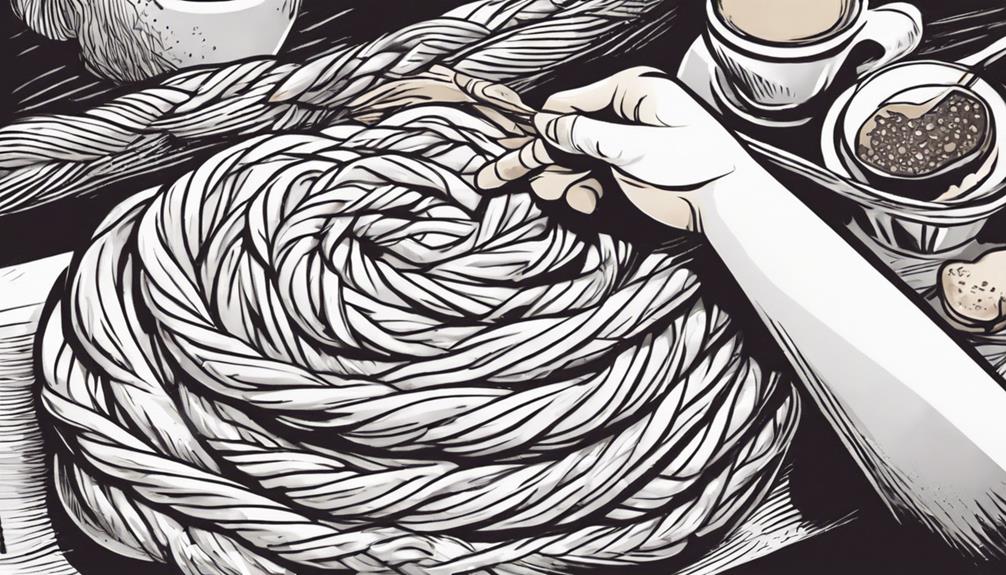
Prepare the braided coffee cake by letting the dough stand at room temperature for an hour before shaping and baking it to golden perfection. Once the dough has rested, divide it and roll it into rectangles. Next, spread a delectable mixture of butter, sugar, and nuts onto the rolled-out dough before skillfully braiding it into beautiful loaves. Place the braided coffee cake in the oven preheated to 350°F and bake for 20-25 minutes until the loaves turn a lovely golden brown.
To add a touch of sweetness and elegance, prepare a simple icing using powdered sugar, milk, and vanilla. Once the baked loaves have cooled, drizzle the icing over them to enhance both the flavor and presentation of the coffee cake. This final step will truly elevate the overall look and taste of your braided treat.
| Baking Process | Ingredients Used |
|---|---|
| Braiding the dough | Butter, sugar, nut mixture |
| Baking time and temperature | 350°F for 20-25 minutes |
| Icing preparation | Powdered sugar, milk, vanilla |
| Final presentation | Drizzling of icing for enhancement |
Icing Preparation

Creating the icing for the braided coffee cake involves mixing powdered sugar, milk, and vanilla to achieve a smooth consistency.
To prepare the icing for your braided treat, follow these simple steps:
- Combine powdered sugar, milk, and vanilla in a bowl.
- Mix the ingredients until you achieve a smooth and lump-free consistency.
- Adjust the icing by adding more milk for a thinner consistency or more powdered sugar for a thicker texture.
- Drizzle the icing over the cooled braided coffee cake generously for a delightful sweet touch and an elegant presentation.
The icing not only enhances the flavor of the coffee cake but also adds a visually appealing finishing touch.
For a creative twist, consider customizing the icing with different flavors or colors to make your braided coffee cake truly unique.
Enjoy the process of preparing the icing as it will elevate the overall look and taste of your delicious creation.
Questions & Replies
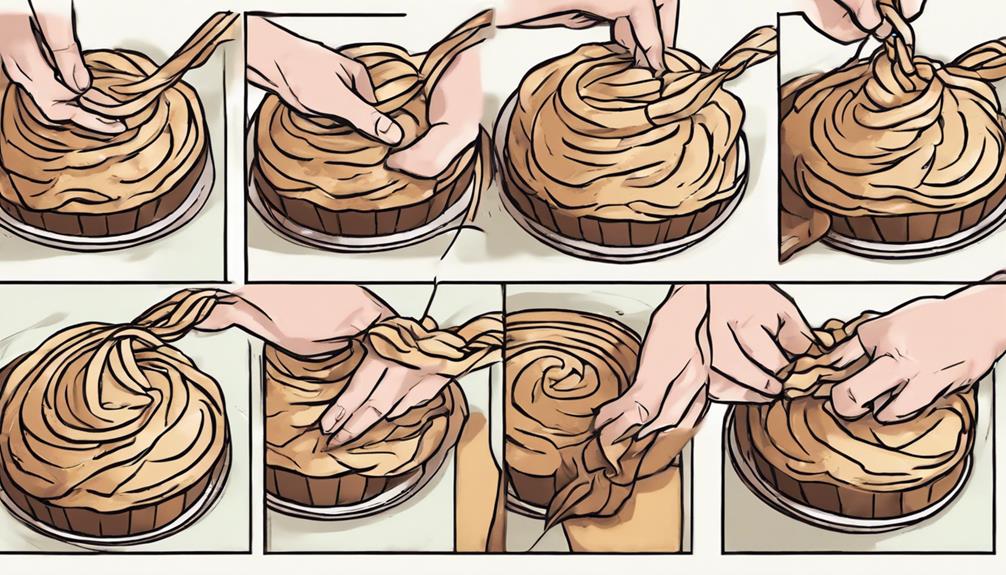
Wondering how to perfect your braiding technique for the coffee cake? When working with puff pastry or Danish dough for your braided coffee cake, start by rolling the dough out on a lightly floured surface. This step helps prevent sticking and guarantees your braid is easy to shape.
Once you have your dough rolled out, spread a layer of cream cheese or your desired filling before proceeding with the braiding process.
If you have any questions about the braiding technique or need clarification on specific steps, don't hesitate to ask the community. Engage with others who've experience in baking braided treats like coffee cakes to gather feedback and tips for achieving a beautiful and delicious outcome.
Sharing your own insights and experiences can also enrich the discussion and provide inspiration for new variations or techniques. Remember to share your queries, tips, and experiences on the platform to enhance your baking journey.
Reviews
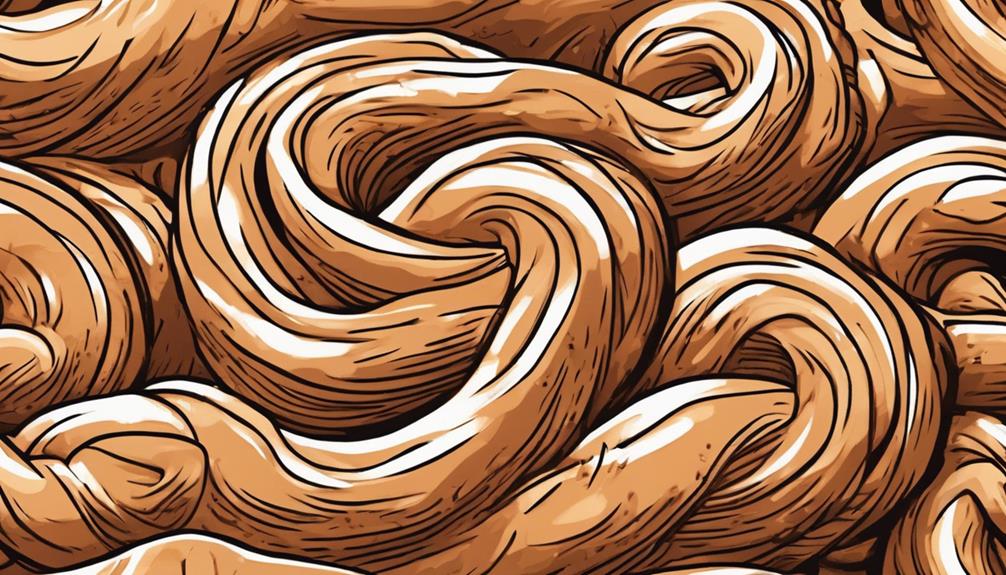
To explore the feedback and insights on the braided coffee cake, let's investigate the reviews shared by readers who've tried the Raspberry Danish Braid and other variations.
Readers praised the appearance and taste of the Raspberry Danish Braid coffee cake. Here are some key points from the reviews:
- The use of parchment paper made cleanup effortless.
- Many enjoyed the sweet touch of brown sugar in the filling.
- Ensuring the dough rise sufficiently was essential for a light and fluffy Danish Braid.
- Folding the strips over the filling was an enjoyable and fulfilling process.
Frequently Asked Questions
What Pairs Well With Coffee Cake?
When thinking about what pairs well with coffee cake, consider fresh fruits like berries or apples, nuts such as almonds or pecans, and a side of bacon or sausage for a savory twist. Enjoy your slice!
Does Coffee Cake Need to Be Refrigerated?
Coffee cake can be stored in the fridge if it's got a moist filling to prevent spoilage. For dry ones, keep them in an airtight container at room temp. Check the recipe for specific storage tips.
Does Coffee Cake Freeze Well?
Coffee cake freezes well for up to 2-3 months. Wrap it tightly in plastic wrap and foil to prevent freezer burn. Thaw in the fridge overnight for best results. Reheat in the oven at a low temperature to maintain its texture and flavor.
Why Is Coffee Cake Called Coffee Cake?
Imagine savoring a slice of coffee cake. It's not about the coffee but the perfect pairing. Originating in Germany, this sweet treat was named for its coffee companionship. Indulge in its sweet, moist goodness!
Conclusion
So go ahead and braid your way to a beautifully intricate coffee cake that will wow your guests and elevate your baking skills to a whole new level! Once you have mastered the art of braiding your coffee cake, you will be able to apply the coffee bread braiding technique to various other baked goods, showcasing your newfound expertise in the kitchen. The intricate designs created through braiding will not only impress your guests, but also give your baked goods a professional and polished look. So don’t hesitate to experiment with different flavors and fillings, and incorporate the coffee bread braiding technique to make your baked creations truly stand out. You can also use the braiding coffee bread technique to make stunning loaves of bread or even savory pastries. The possibilities are endless when it comes to incorporating braiding into your baking repertoire. So, roll up your sleeves, gather your ingredients, and get ready to elevate your baking game with the art of braiding coffee bread. With a little practice and creativity, you’ll be amazed at the beautiful and delicious creations you can whip up using this impressive technique.
The braided design adds a touch of elegance and flair, making this treat not only delicious but also visually stunning.
Don't be afraid to get creative and experiment with different flavors and decorations to truly make this coffee cake your own masterpiece.
Happy baking!
